Estimated Read Time: 7 minutes
The Society Finch
Welcome to Part 10 of The Finches of Serenity!
This is the final article of our blog series about the wonderful finches that call our aviaries, home.
This article will cover information about the joyful and friendly Society Finch!
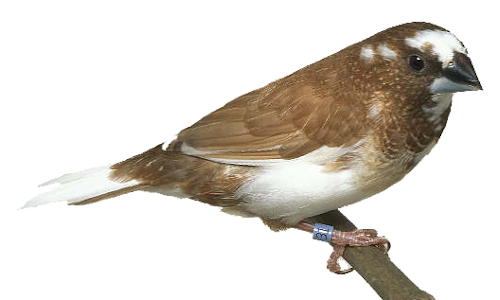
Common Names For a Society Finch
- Bangalese Finch
- Bengali Finch
Natural Habitat of a Society Finch
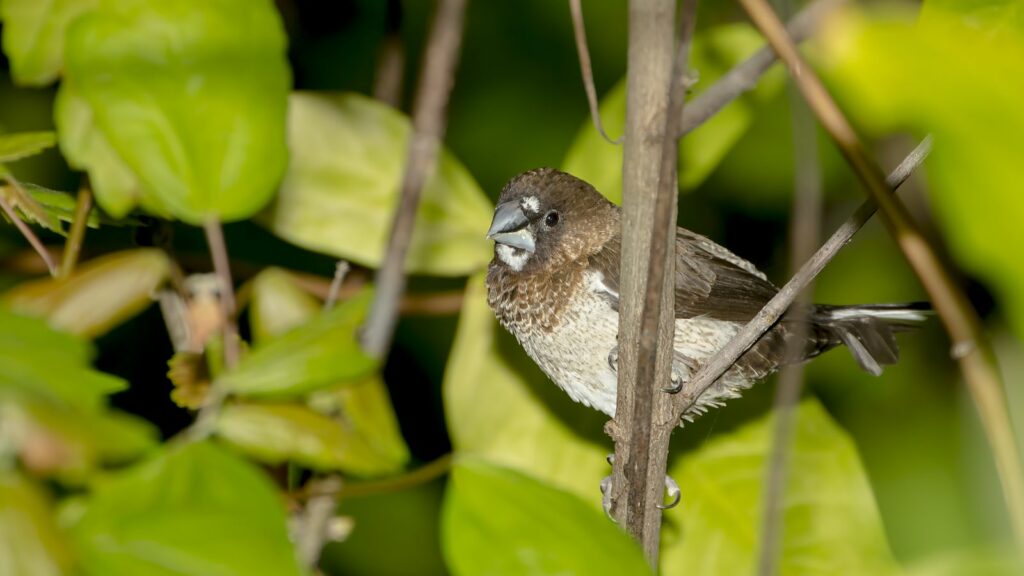
The society finch, also called the Bengalese finch, is native to grasslands and woodlands across Asia.
However, this finch isn’t technically a wild bird.
They’re a very popular domesticated species as a result of cross-breeding between sharp-tailed finches and munia finches.
Physical Characteristics
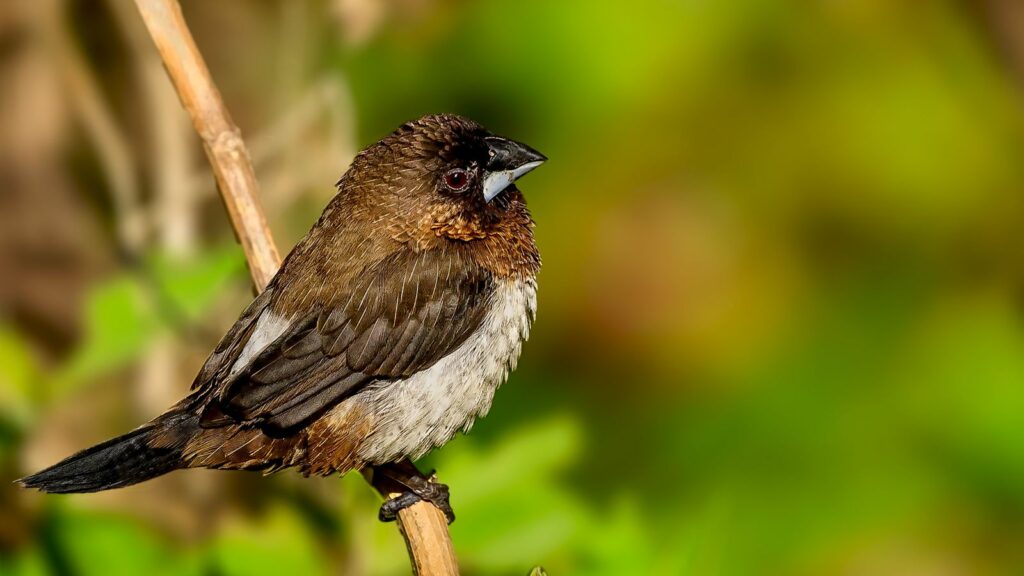
The society finch grows to about 4 inches long from beak to tail. Their main colors consist of chocolate-colored wings, back, neck, and chest. They also have shades of white on their tail, a patch on their head, and a two-tone black and white beak.
Many color mutations also exist, such as chocolate brown, red-brown, albino, grey, and mottled pied. ‘Mottled pied’ is where white feathers are randomly strewn throughout the bird’s normal colors.
How to Tell Apart Males, Females, and Fledglings
It’s hard to tell the sexes apart because their colors are very similar.
The primary signifier is that a female society finch’s colors are usually duller than the males’.
Fledglings, on the other hand, are a dull olive color until they molt.
A Society Finch’s Bird Song
Male society finches are the singers and dancers, with the main purpose of attracting a mate. Females, on the other hand, don’t dance or sing, but they do frequently chirp.
Listen in on what these society finches have to say.
Behavior and Temperament
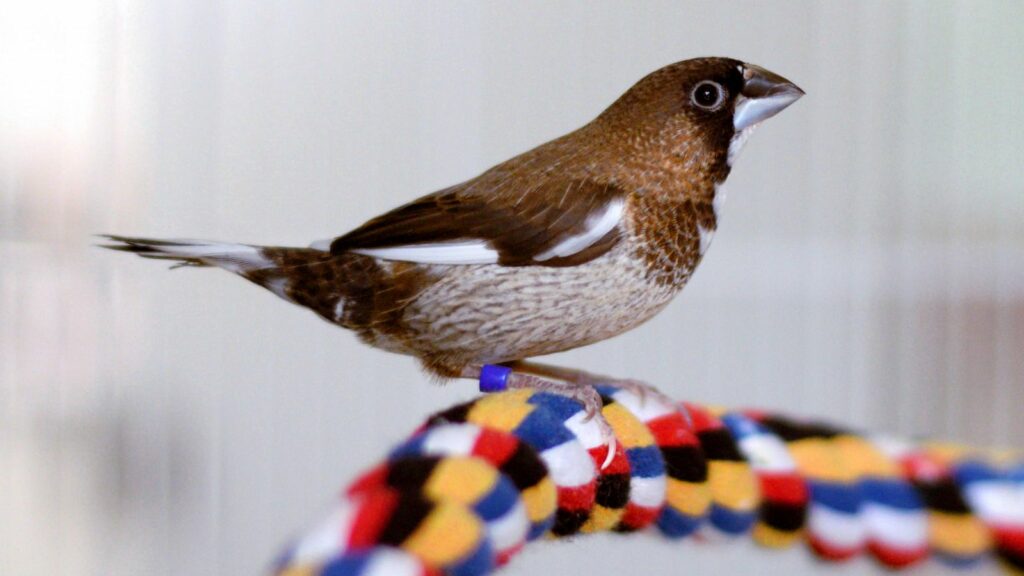
Society finches are very social birds. They enjoy the company of other society finches and other species too.
Yet, they don’t love being handled by humans, so we don’t bother them too much when we conduct our aviary cleaning services.
An interesting fact about society finches is that they’re excellent parents!
In the wild, they care for their babies much longer than the average bird. They’ll even take care of other hatchlings that aren’t from their own brood!
Compatibility With Other Birds
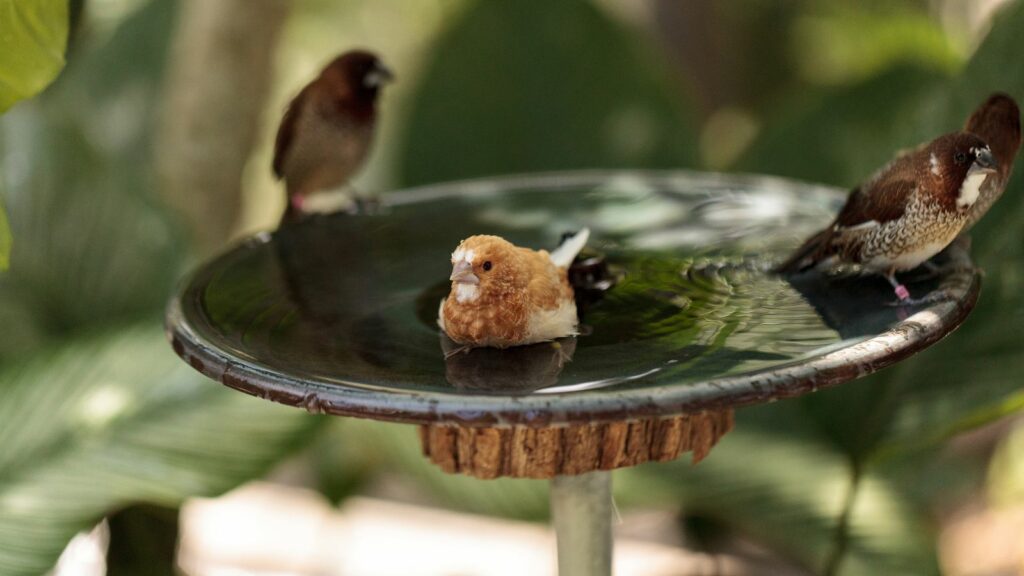
Society finches get along well with their own species, as well as others with similar temperaments.
However, when housing them, our main rule is to include more females than males in a single enclosure.
A ratio with more males than females encourages competition for their mate, so frequent conflicts would ensue.
And in the breeding season, society finches go from a passive personality to a little pushier.
This is normal for any finch, but it’s a change in their personality that we keep an eye on for the safety of all our birds.
Want to learn what specific birds they should and shouldn’t be paired with? Check out this finch compatibility chart!
Breeding Habits of Society Finches
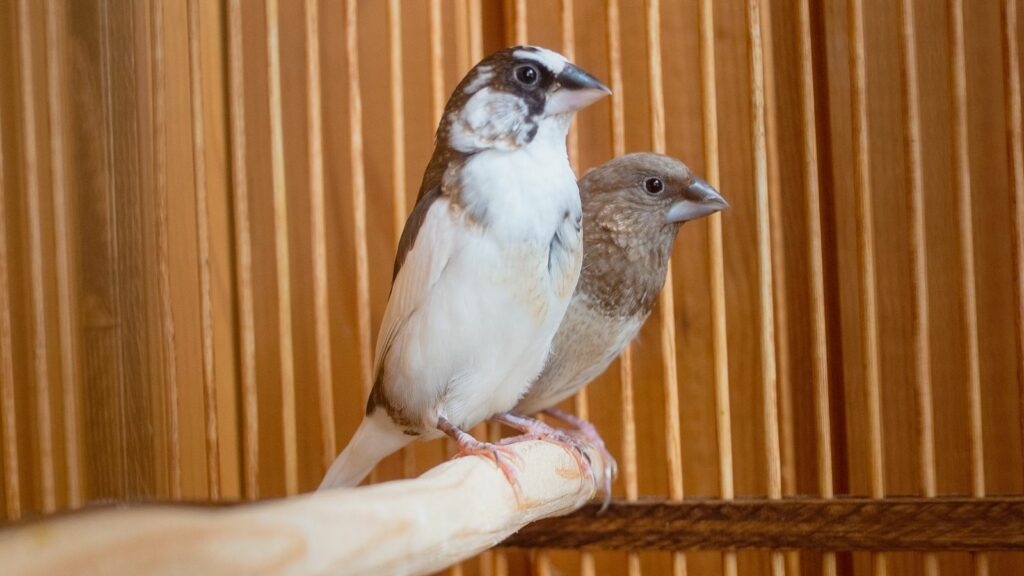
The breeding season for society finches is between March and July in North America. A hen will lay around four to eight eggs per clutch, followed by a two-week incubation period.
About three weeks after hatching, the young society finches will be pushed from the nest, but will still stay close to their parents for feeding purposes.
Eventually, a breeding pair will want to mate again. If this is in an enclosure, the parents and growing hatchlings tend to get aggressive and territorial.
So in our Serenity Aviaries, we safely remove the young finches from the enclosure so the parents can breed again.
Placing the fledglings in another enclosure keeps peace in the aviary and ensures a safe breeding environment for future hatchlings.
NOTE: We offer breeding pairs for society finches, if available. If your company wants an aviary and a collection of finches, learn about our leases today!
4 Tips for a Society Finch Aviary
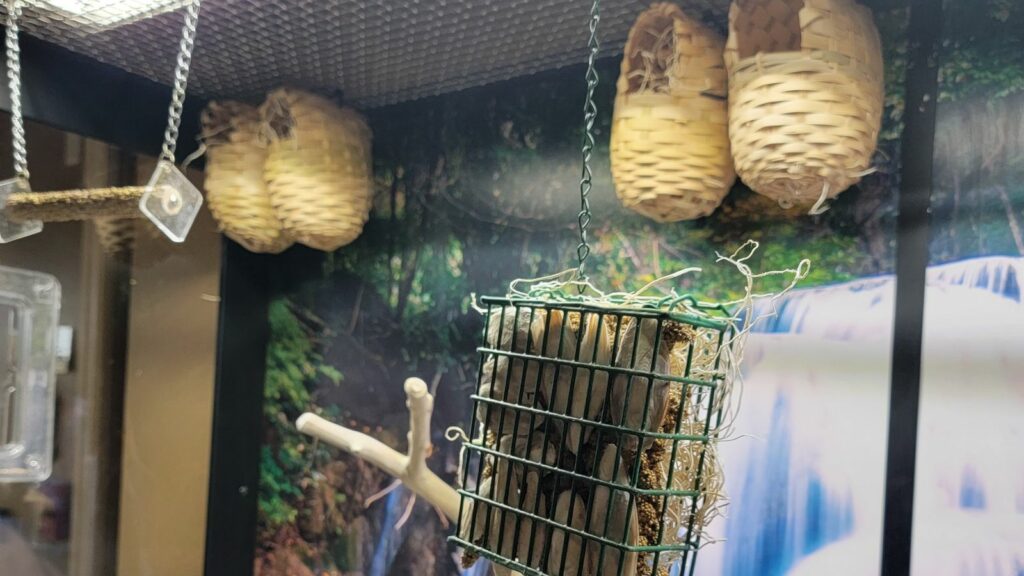
1) Size
For a happy and comfortable society finch, a relatively large aviary is necessary.
Society finches may be small, but they’re very active. They like to jump from perch to perch, fly back and forth, and chase the other birds around the aviary.
If a society finch, or a group of society finches, feels overly crowded, it will lead to stress, agitation, and could eventually cause fighting and illness among the birds.
2) Shape
Because they enjoy flying back and forth, the length of their enclosure is more important than the height.
Also, avoid using rounded edges for the structure, as this removes some of their available space.
3) Materials
Chewing and ingesting materials can be an issue for finches in an aviary.
The structure should be free of softwood, paint, untreated steel, and soft plastics.
By using high-grade materials, like solid oak, stainless steel wire, and high-grade laminate panels, Serenity Aviaries don’t allow for chewing or ingestion.
4) Features and Accessories
You need food and water access, ventilation, adequate internal temperature, and lighting for a comfortable society finch.
Additional accessories like water and food sources, nests, swings, and branches are needed for rest, entertainment, and nourishment.
NOTE: Finches feel safer when they’re higher up, especially in an aviary. We position their nests, branches, and swings as high up in the aviary as possible.
Looking for Your Hassle-Free Aviary?
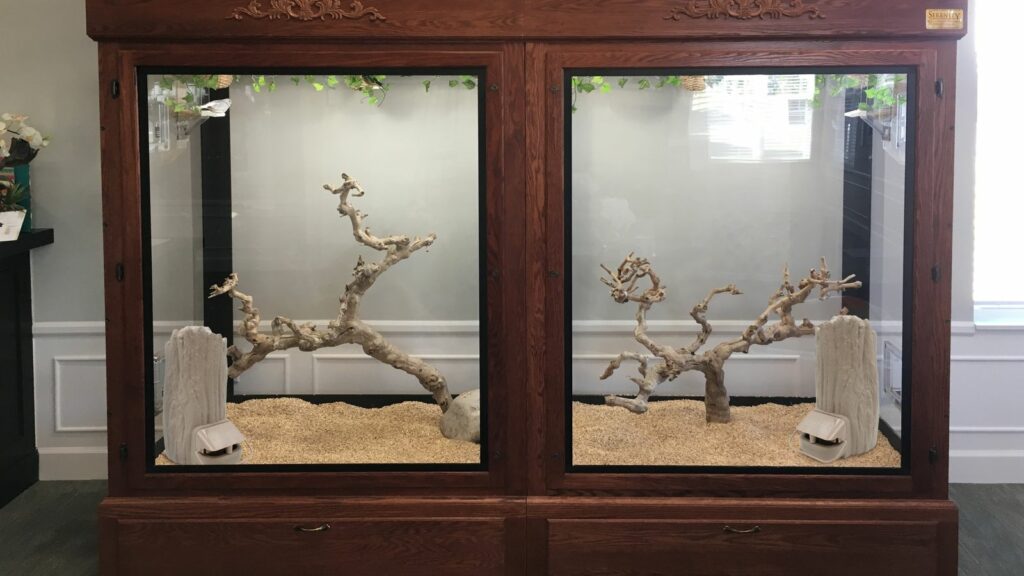
At Serenity, we handcraft spacious aviaries for business facilities in the US.
We also include the birds, feeders, decor, and provide routine services!
The Services We Provide:
- Remove and replace bedding.
- Clean droppings tray.
- Wipe down all surfaces.
- Scrub all cracks and crevices.
- Sanitize and rotate accessories.
- Sanitize and replenish the Infinity Feeder.
- Thoroughly rinse and dry the enclosure.
Next Up: Part 1 of The Fish of Serenity!
Thank you for visiting our blog!
We’ve gone through the 10 finches that we offer in our Serenity Aviaries!
Next up, we’ll begin a blog series centered around the vibrant, freshwater fish we offer in our Serenity Aquariums!
Also, keep an eye out for our other informative blog posts on birds, aviaries, fish, and aquariums!
